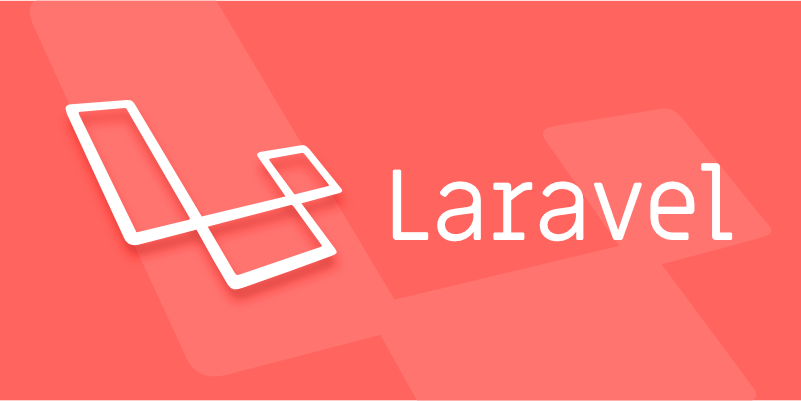Adding multilingual support to a Laravel application
Jul 03, 2025 am 01:17 AMThe core methods for Laravel applications to implement multilingual support include: setting language files, dynamic language switching, translation URL routing, and managing translation keys in Blade templates. First, organize the strings of each language in the corresponding folders (such as en, es, fr) in the /resources/lang directory, and define the translation content by returning the associative array; 2. Translate key values ??through the \_\_() helper function call, and use App::setLocale() to combine session or routing parameters to realize language switching; 3. For translation URLs, paths can be defined for different languages ??through prefixed routing groups, or route aliases in language files can be dynamically mapped; 4. Keep the translation keys concise in the Blade template and use Laravel's support for placeholders and plural forms to improve translation flexibility. Together, these steps create a clear structure and easy to maintain multilingual system.

Adding multilingual support to a Laravel application isn't too complicated, but it does require some planning and setup. The core idea is to make your app able to serve content in multiple languages ??based on user preference or browser settings.

Laravel has built-in localization features that you can use right out of the box — no need for extra packages unless you want more advanced functionality.

Setting up language files
The first thing you'll want to do is organize your language strings. Laravel uses the lang directory for this. Each language gets its own folder (like en , es , fr ), and inside each folder, you create PHP files that return associated arrays of key-value pairs.
For example:

/resources/lang/en/messages.php /resources/lang/es/messages.php
Each file might look like this:
// en/messages.php
Return [
'welcome' => 'Welcome to our site!',
]; // es/messages.php
Return [
'welcome' => '? Bienvenido a nuestro sitio!',
]; You can then display these messages using the __() helper function in views or controllers:
<h1>{{ __('messages.welcome') }}</h1>This method keeps your strings organized and makes switching between languages ??easier later.
Switching between languages ??dynamically
To let users switch languages, you'll typically set a session variable or use a route parameter like /es/home . Laravel doesn't handle this automatically, so you'll need to write a bit of logic.
A common approach is to create a middleware that checks the URL prefix or a cookie/session value and sets the app locale accordingly.
Here's a basic example of how to do it via a controller or middleware:
App::setLocale($locale); // $locale could be 'en', 'es', etc.
You can also add routes for switching the language:
Route::get('/language/{locale}', function ($locale) {
App::setLocale($locale);
session(['locale' => $locale]);
return redirect()->back();
});And in your view, show links for available languages:
@foreach(['en', 'es', 'fr'] as $lang)
<a href="{{ url("/language/$lang") }}">{{ strtoupper($lang) }}</a>
@endforeachMake sure to check the session or user preference early in the request lifecycle so the correct language loads before rendering views.
Translated URLs and routes
If you want your URLs to be translated (eg, /about becomes /sobre in Spanish), things get a little trickier. Laravel doesn't support translated route names directly, but you can define separate routes for each language.
One way to manage this is by using route groups with different prefixes:
Route::prefix('en')->group(function () {
Route::get('/about', [PageController::class, 'about']);
});
Route::prefix('es')->group(function () {
Route::get('/sobre', [PageController::class, 'about']);
});Alternatively, you can store translations of route slugs in language files and map them dynamically. But that requires more complex routing logic and possibly a database lookup if the slugs are dynamic (like blog posts).
Keep in mind: translated URLs improve SEO for each language version, but they take more maintenance.
Managing translation keys in Blade templates
When working with Blade templates, it's best to keep your translation keys short and describe. For example:
{{ __('auth.login') }}Avoid putting entire sentences directly in the template — it makes managing translations harder over time.
Also, if you're dealing with pluralization or placeholders, Laravel supports that too:
__('messages.items', ['count' => $items->count()])
In your language file:
// en/messages.php
'items' => '{0} No items found.|{1} One item found.|[2,*] :count items found.'This helps when your app needs to display slightly different text depending on context or data.
Basically, setting up multilingual support in Laravel comes down to organizing your language files, handling locale changes, and deciding whether you need translated URLs. It's not overly complex, but it does require attention to structure and consistency.
The above is the detailed content of Adding multilingual support to a Laravel application. For more information, please follow other related articles on the PHP Chinese website!

Hot AI Tools

Undress AI Tool
Undress images for free

Undresser.AI Undress
AI-powered app for creating realistic nude photos

AI Clothes Remover
Online AI tool for removing clothes from photos.

Clothoff.io
AI clothes remover

Video Face Swap
Swap faces in any video effortlessly with our completely free AI face swap tool!

Hot Article

Hot Tools

Notepad++7.3.1
Easy-to-use and free code editor

SublimeText3 Chinese version
Chinese version, very easy to use

Zend Studio 13.0.1
Powerful PHP integrated development environment

Dreamweaver CS6
Visual web development tools

SublimeText3 Mac version
God-level code editing software (SublimeText3)

Hot Topics
 Laravel Vue.js single page application (SPA) tutorial
May 15, 2025 pm 09:54 PM
Laravel Vue.js single page application (SPA) tutorial
May 15, 2025 pm 09:54 PM
Single-page applications (SPAs) can be built using Laravel and Vue.js. 1) Define API routing and controller in Laravel to process data logic. 2) Create a componentized front-end in Vue.js to realize user interface and data interaction. 3) Configure CORS and use axios for data interaction. 4) Use VueRouter to implement routing management and improve user experience.
 How to test Laravel API interface?
May 22, 2025 pm 09:45 PM
How to test Laravel API interface?
May 22, 2025 pm 09:45 PM
Efficient methods for testing Laravel API interfaces include: 1) using Laravel's own testing framework and third-party tools such as Postman or Insomnia; 2) writing unit tests, functional tests and integration tests; 3) emulating a real request environment and managing database status. Through these steps, the stability and functional integrity of the API can be ensured.
 How to customize Laravel's user authentication logic?
May 22, 2025 pm 09:36 PM
How to customize Laravel's user authentication logic?
May 22, 2025 pm 09:36 PM
Custom Laravel user authentication logic can be implemented through the following steps: 1. Add additional verification conditions when logging in, such as mailbox verification. 2. Create a custom Guard class and expand the authentication process. Custom authentication logic requires a deep understanding of Laravel's authentication system and pay attention to security, performance and maintenance.
 How to create Laravel package (Package) development?
May 29, 2025 pm 09:12 PM
How to create Laravel package (Package) development?
May 29, 2025 pm 09:12 PM
The steps to create a package in Laravel include: 1) Understanding the advantages of packages, such as modularity and reuse; 2) following Laravel naming and structural specifications; 3) creating a service provider using artisan command; 4) publishing configuration files correctly; 5) managing version control and publishing to Packagist; 6) performing rigorous testing; 7) writing detailed documentation; 8) ensuring compatibility with different Laravel versions.
 Laravel integration with social media login (OAuth)
May 22, 2025 pm 09:27 PM
Laravel integration with social media login (OAuth)
May 22, 2025 pm 09:27 PM
Integrating social media login in the Laravel framework can be achieved by using the LaravelSocialite package. 1. Install the Socialite package: use composerrequirelaravel/socialite. 2. Configure the service provider and alias: add relevant configuration in config/app.php. 3. Set API credentials: Configure social media API credentials in .env and config/services.php. 4. Write controller method: Add redirection and callback methods to handle social media login process. 5. Handle FAQs: Ensure user uniqueness, data synchronization, security and error handling. 6. Optimization practice:
 How to implement password reset function in Laravel?
May 22, 2025 pm 09:42 PM
How to implement password reset function in Laravel?
May 22, 2025 pm 09:42 PM
Implementing password reset function in Laravel requires the following steps: 1. Configure the email service and set relevant parameters in the .env file; 2. Define password reset routes in routes/web.php; 3. Customize email templates; 4. Pay attention to email sending problems and the validity period of tokens, and adjust the configuration if necessary; 5. Consider security to prevent brute-force attacks; 6. After the password reset is successful, force the user to log out of other devices.
 Common security threats and protection measures for Laravel applications
May 22, 2025 pm 09:33 PM
Common security threats and protection measures for Laravel applications
May 22, 2025 pm 09:33 PM
Common security threats in Laravel applications include SQL injection, cross-site scripting attacks (XSS), cross-site request forgery (CSRF), and file upload vulnerabilities. Protection measures include: 1. Use EloquentORM and QueryBuilder for parameterized queries to avoid SQL injection. 2. Verify and filter user input to ensure the security of output and prevent XSS attacks. 3. Set CSRF tokens in forms and AJAX requests to protect the application from CSRF attacks. 4. Strictly verify and process file uploads to ensure file security. 5. Regular code audits and security tests are carried out to discover and fix potential security vulnerabilities.
 What is Middleware in Laravel? How to use it?
May 29, 2025 pm 09:27 PM
What is Middleware in Laravel? How to use it?
May 29, 2025 pm 09:27 PM
Middleware is a filtering mechanism in Laravel that is used to intercept and process HTTP requests. Use steps: 1. Create middleware: Use the command "phpartisanmake:middlewareCheckRole". 2. Define processing logic: Write specific logic in the generated file. 3. Register middleware: Add middleware in Kernel.php. 4. Use middleware: Apply middleware in routing definition.






